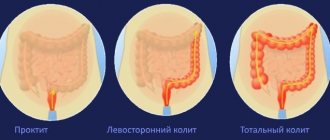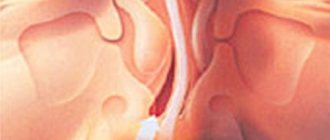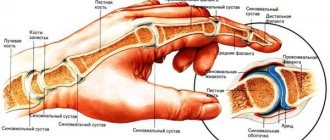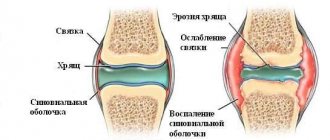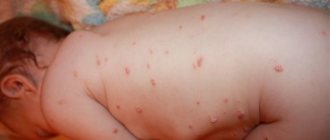Hepatosplenomegaly is a pathological condition caused by a parallel increase in the volume of the liver and spleen. This phenomenon is explained by the fact that these two organs are connected to each other by the portal vein. In addition, they have joint lymph nodes. This disorder is not an independent disease and occurs in people of any age group, regardless of gender. In the international classification of diseases (ICD-10), such a syndrome has its own code – R16.2.
- Etiology
- Symptoms
- Diagnostics
- Treatment
This disorder is caused by a large number of different diseases, but does not pose a threat to life. The clinical manifestation of such a disorder is very often combined with the symptoms of the disease that caused its formation.
Diagnosis of the syndrome is primarily aimed at identifying the source of its occurrence and involves performing instrumental examinations. There is no specific treatment to eliminate the disorder. Therapy involves eliminating the underlying disease.
Leading clinics in Israel
Assuta
Israel, Tel Aviv
Ikhilov
Israel, Tel Aviv
Hadassah
Israel, Jerusalem
Classification of hepatoma
The main feature that characterizes this epithelial tumor is considered to be 3 forms of its development (growth):
- expansive (central) growth. A tumor in the form of a single node develops without destroying, but only pushing aside healthy tissue of the organ. These tissues gradually become denser, forming a dense shell around the lesion - a pseudocapsule. This type of tumor development is considered the most favorable in oncology due to the clear limitation of the tumor from healthy tissue, which makes it possible to easily remove the tumor surgically;
- invasive (infiltrating) growth. This type of tumor development is characterized by its active spread in the parenchyma and its loose layers. The tumor grows in various directions, launching so-called “tentacles”, but mostly germination occurs near the blood and lymphatic vessels. This type of tumor does not have clear boundaries, which complicates the process of complete surgical removal of the tumor;
- multicentric (nodular). With this type of development, several nodules are formed that have a common base; they can develop in different parts of the parenchyma simultaneously or sequentially. This type of growth also introduces certain difficulties into the surgical removal process.
The form of tumor growth has a direct connection with the following reasons: physiological (resistance of surrounding anatomical structures), aggressiveness of abnormal cells, developmental conditions.
There are several types of classifications by which liver hepatoma is divided. It can be classified according to the WARV system, which includes adenoma developing from parenchymal hepatocytes and two types of carcinomas - with and without cirrhotic transformations.
Based on the histological structure, the neoplasm is divided into several types:
- trabecular. Tumor cells create trabeculae (lamellar septa), which are separated by capillary vessels. It is no more thick than 2-3 hepatocytes. There are no fibrous changes.
- scirrhosous type. It is similar to trabecular, but fibrotic features are present.
- pseudoglandular. The liver parenchyma contains glandular structures that resemble small tubules in shape. They contain bile pigments and fibrous fluid.
- compact. It consists of trabeculae, very close to each other, between which there are no even minimal cavities (sinusoids in which the hepatic capillaries are located).
The type of epithelial neoplasm can only be identified using certain diagnostic methods.
It can also be noted that in children in the absence of cirrhosis, massive hepatoma often occurs; it is prone to complications (ruptures). There are also hepatomas: diffuse (most of the liver is affected), anaplastic, fibroplastic and others.
Causes of the disease
A common prerequisite for the development of hepatocellular carcinoma of the liver is the presence of liver cirrhosis in the patient. This disease is more common in areas where hepatitis B and C are widespread.
A number of other factors can be identified that contribute to the development of hepatoma and accelerate the process of its malignancy:
- congenital or acquired anomalies of the biliary tract. They provoke stagnation of bile and accumulation of carcinogens in the liver parenchyma, and this increases the load on the secretory organ;
- long-term intoxication of the body with alcohol, drugs, chemicals. The concentration of harmful substances in the liver tissue causes the destruction of hepatocytes and their replacement with fibrous tissue.
- eating foods that contain aflatoxin B (mycotoxin) - a substance that causes gene mutations, produced in cereals when storage is impaired. Aflatoxin accumulates most in peanuts.
- diseases of parasitic origin that affect the liver (opisthorchiasis) can also provoke the formation of hepatoma. In developed countries, the hepatitis C virus is considered the main risk factor for developing the disease.
Also, risk factors contributing to the occurrence of this disease are:
- the presence of metabolic disorders: tyrosinemia, Niemann-Pick disease;
- gallstones;
- use of oral contraceptives.
Prevention
Targeted prevention methods include the following:
- proper nutrition;
- quitting smoking and drinking alcohol;
- moderate physical activity;
- weight normalization;
- timely treatment of all ailments.
In addition, you should remember the importance and effectiveness of regular preventive examinations with doctors.
An enlarged liver is an alarming sign of a number of pathologies, diseases, syndromes and other negative conditions, one way or another related to the functioning of the organ. The medical designation for this symptom is hepatomegaly. Why does this condition develop, what are its symptoms, treatment methods and possible prognosis for recovery? You will read about this and much more in our article.
Symptoms and manifestations
The first signs of liver hepatoma occur only when the tumor grows to a significant size.
It is recommended to pay attention to some of the most specific signs of this type of disease:
- abdominal growth associated with the appearance of ascites, which is accompanied by filling of the abdominal cavity with fluid;
- the formation of single or multiple internal hardenings on the right, clearly palpable during palpation;
- manifestation of acute pain in the right hypochondrium, their relief is problematic;
- temperature increase;
- hepatomegaly (uneven enlargement of the organ).
In addition to these specific symptoms, general oncological symptoms can be noted:
- persistent weakness;
- almost complete loss of appetite followed by sudden weight loss;
- immunity of meat products;
- murmurs over the hepatic arteries (may be a symptom of alcoholic cirrhosis of the liver);
- nausea and vomiting;
- paraneoplastic manifestations (carcinoid syndrome, hypertrophic osteoarthropathy, polycythemia, feminization)
The first symptom of hepatoma may be acute abdominal pain and shock from rupture or bleeding in the area of the tumor.
Remember! The most obvious sign of liver hepatoma is obstructive jaundice. Although this symptom is a manifestation of many liver diseases, it should be a reason to consult a doctor to determine the cause.
The liver is enlarged: what does this mean?
Enlarged liver, or hepatomegaly, is characterized by pathological enlargement of this organ. Medicine knows of cases where the weight of the liver reached 15 kilograms. If this symptom is not eliminated in a timely manner, then a life-threatening illness – liver failure – may develop. It should be noted that the presence of this symptom does not always indicate pathologies in the liver area. Quite often, the manifestation of this symptom may indicate the development of pathological processes in other organs and systems of the body.
The danger of organ enlargement lies not only in disruption of the liver and digestion - it can be a sign of abnormalities in organs and systems that are not related to the gastrointestinal tract: blood, heart. When a patient experiences liver swelling, it is important to stop such a symptom at the initial stage of its appearance, since it can provoke very serious consequences for the body. They are as follows:
- Liver failure, which can be fatal.
- The appearance of benign tumors.
- The development of diseases, the symptom of which is an enlarged liver.
- Hepatocarcinoma.
- Cirrhosis of the liver.
To avoid the complications described above, you need to know how to treat an enlarged liver. In addition, it is important to start treatment for this symptom on time. Be sure to contact your therapist, who will refer you to a specialist.
Stages of disease development
Primary hepatoma is a complex disease that develops in several stages, each of which has specific features. When prescribing treatment, doctors rely on a 4-stage division of hepatoma.
Stage 1 of hepatoma is quite difficult to determine - there are no pronounced changes in the cells, the liver functions normally, and the symptoms are not pronounced and nonspecific.
Stage 2 is characterized by the beginning of tumor growth (it can increase to 5 cm in diameter). At stage 2, the tumor begins to spread to the surrounding normal tissue. Abnormal cells grow into the walls of blood vessels, but do not penetrate into regional lymph nodes. There are also no metastases. Symptoms are nonspecific.
Stage 3 liver hepatoma is characterized by tumor growth beyond the boundaries of the liver parenchyma. Lymph nodes and organs located in the abdominal cavity are affected. This stage of disease development is divided, in turn, into substages - A, B and C, with each of which there is an increase in malignancy and an increase in the number of metastases. This stage gives pronounced symptoms.
Stage 4 hepatoma is considered the final stage of the disease, when the disease becomes incurable. The tumor is greatly increased in size and takes on the appearance of an integral conglomerate. Secondary lesions are diagnosed in the most remote areas of the body.
Would you like to receive an estimate for treatment?
*Only upon receipt of data on the patient’s disease, a representative of the clinic will be able to calculate an accurate estimate for treatment.
Diagnostics
Hepatoma is diagnosed using the following diagnostic methods:
- blood test for tumor markers.
- Ultrasound - determines the location and size of the tumor.
- CT and MRI - help determine whether the hepatoma has spread to surrounding healthy tissue or into the walls of nearby blood vessels.
- hepatic arteriography. It is necessary if surgery is planned.
- positron emission tomography (PET).
Differential diagnosis with cholangiocellular liver cancer is also carried out.
Treatment
The main treatment method for liver hepatoma is surgery. It is usually prescribed in the absence of metastases and the tumor is localized in one lobe of the organ. Surgery can be performed as partial resection or complete removal with simultaneous liver transplantation. Most often, the damaged part (segment) or lobe of the liver is removed.
To increase the effectiveness of surgical treatment of liver hepatoma, the operation is performed in conjunction with a course of antitumor therapy. If the cancer process has spread sufficiently, then surgery can only worsen the effect and preference is given to chemotherapy. But the approach to treating hepatoma is individual for each patient; there are many nuances and exceptions.
Chemotherapy before surgery is prescribed to reduce the size of the tumor, and after surgery - to destroy the malignant cells remaining after surgery to prevent relapse of the disease. Radiation therapy, used for many types of oncology, is not used for liver hepatoma because such treatment causes severe harm to healthy hepatocytes and can accelerate death.
Palliative treatment of hepatoma is carried out when the disease is diagnosed at the last (terminal) stage of cancer development, when cure is no longer possible, and therapy aims to alleviate the patient’s condition. To relieve severe symptoms of liver hepatoma, cancer patients are prescribed chemotherapy courses and irradiation of distant organs affected by metastases. In case of excessive compression of the bile ducts, which provoke the appearance of obstructive jaundice, they are expanded (stenting) using special frames for palliative purposes.
Drug therapy is usually carried out with the drug "Doxorubicin" (doxorubicin hydrochloride). It may be contraindicated in severe heart disease, leukopenia, severe liver and kidney dysfunction, and thrombocytopenia. This drug also has side effects such as neutropenia. Other drugs used are: Fluorouracil, Cyclophosphamide (Cyclophosphamide).
For hepatoma, a high-calorie, low-protein diet is indicated.
What causes liver enlargement in children?
If an increase in liver size is observed in a newborn child, no treatment is provided; hepatomegaly goes away on its own within a month. The causes of the phenomenon should be sought in the mother’s body if she has diabetes mellitus or other severe endocrine diseases; in most cases, the baby’s filtering organ is enlarged.
Doctors consider it normal if a child under the age of seven has an enlarged liver by 1 centimeter. However, as the organ ages, it should gradually acquire standard sizes. If this does not happen, the child may have:
- there are inflammatory processes;
- metabolism is impaired;
- Oncology is developing.
Other causes include liver damage resulting from contact with medications and toxic substances. A predisposing factor to changes in the size of the organ may be problems with the bile ducts.
In itself, an increase in liver volume is not considered critical. But if hepatomegaly is accompanied by other symptoms, this is an indication for a detailed diagnosis of the whole organism.
One should not be afraid of an enlarged liver in preschool children: pediatricians consider this a natural phenomenon associated with the development of the body. If the organ can be felt beyond the ribs to a length of 1-2 cm, this is not dangerous and will go away as the child grows older. If the size of the liver does not change and exceeds the established norm in a child over 7 years old, accompanied by additional symptoms of internal disorders (nausea, fever, yellowness of the mucous membranes and skin, the appearance of rashes, weight loss), the reasons may lie in:
- presence of metastases;
- pathologies of metabolic processes;
- congenital TORCH infections;
- toxic/drug-induced liver damage;
- diseases of the biliary tract;
- blockage of the bile ducts.
Metastases and relapse of hepatoma
Liver hepatoma of stages 2 and 3 cannot be completely cured. Recovery is hampered by her tendency to relapse. Recurrence of liver hepatoma may appear in the near future after therapeutic courses and indicates not only improper treatment, but also the presence of metastases that were not diagnosed in time. This type of cancer, like liver sarcoma, metastasizes most often through the hematogenous route, although there are also lymphogenous or implantation routes. Metastases are more common in the kidneys, spleen, and lungs. This aggravates the course of the disease and gives an unfavorable prognosis for recovery.
Possible complications:
- liver failure;
- hemoperitoneum;
- cachexia.
What to do and how to treat the liver if it is enlarged?
The liver is a very responsive organ of our body and, remarkably, its health underlies our entire body as a whole. Therefore, the treatment of most human diseases could be accelerated and their effectiveness increased significantly if we always began our path to health by restoring the health of our liver...
In addition, do not forget about an integrated approach: no diet, no best products can do what the whole range of measures to restore the liver is capable of.
And it logically follows from the causes of diseases:
- Do you lead a sedentary lifestyle? — Introduce into your daily practice special exercises for liver health and healthy sports
- Do you have a poor, unhealthy diet? — Inspect your refrigerator and adjust your daily diet
- Do you take a lot of medications, smoke, drink alcohol, or get toxins from the environment? - change your lifestyle, place of work, replace medications with herbs, start carrying out regular cleanses of the whole body - and your liver will be healthy, and with it, the whole body will be brought up to the desired level.
Almost always the LIVER can be restored to normal functioning! This body is extremely responsive to our efforts to improve health.
Liver cells are capable of regenerating (restoring) - it can restore its original volume, even if more than 70% of the liver tissue is destroyed.
Disease prognosis
With early diagnosis, the prognosis is favorable, but since the disease is often diagnosed in the last stages, no more than 15% of patients overcome the 5-year survival threshold. It is possible to defeat this disease, but to do this it must be diagnosed at the initial stages of development. At the last stage, liver hepatoma has the most unfavorable prognosis - only 6% of patients have a chance to live 1-2 years. For the remaining patients, death awaits within a few months of diagnosis.
After organ transplantation, the 2-year survival rate is 25-30%. Partial remission after chemotherapy or immunochemotherapy may occur in 25% of patients.
Video on the topic:
How to shrink the liver using folk remedies?
There are methods to reduce an enlarged liver using traditional medicine recipes:
- Honey. 1/3 cup of honey is mixed with a few drops of lemon juice or rosehip decoction. The prepared healing mixture must be consumed during the day. You can also dissolve two teaspoons of natural honey in one glass of warm water and drink the prepared product three times a day.
- Boiled beets. Every day you need to eat 150 grams of boiled beets. You can fill it with vegetable oil.
- Pumpkin. Eat 500 grams of grated raw pumpkin per day. You can replace grated pumpkin with ½ glass of pumpkin juice. You can also eat about three kilograms of baked or boiled pumpkin over the course of one day.
- Wild strawberry. Juice is squeezed out of wild strawberries and ½ glass is drunk in the morning on an empty stomach.
- Cranberry. Cranberry juice is added to tea. You can also simply make juice from cranberries and drink a glass several times a day.
- Oatmeal broth - rinse a glass of oats, pour 1 liter of cold water. Bring to a boil in a small, thick-walled saucepan and simmer for 40 minutes. on low heat. Wrap in a blanket for 6 hours. Drink 50 ml before main meals for a month.
- Mix mint and St. John's wort leaves, motherwort herb and immortelle flowers 1:1:1:1, take 2 tbsp. l. received fee. Boil in 0.5 liters of water. Filter, drink 50 ml before meals. The course of treatment is a month.
